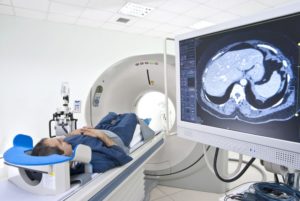The global market of Magnetic Imaging Resonance (MRI) is predicted to reach USD 7995.1 million in 2025 from a figure of USD 5913.6 in the year 2017. In fact, the magnetic imaging resonance market is also likely to grow with an average CAGR of 3.8% from 2018 to 2025.
The health ministry of various countries across the globe is trying to provide better access to health care and related services. As a result, they are willing to provide funds to researchers and medicine manufacturing companies as well as medical technology companies to meet the increasing demands for better options in diagnostics and treatment.
Funding Commitments for a Better Cause
Several developed countries have committed to funding medical research that would help the world. In February 2017, the British Columbia Health Ministry announced additional funding of USD 25 million to improve MRI scans access to better surgeries in the region.
Nevertheless, MRI scans are still expensive, which remains a major cause of concern in the market of magnetic imaging resonance.
The Medicare Pricing Data of 2015 reveals that the average cost of an MRI scan in America goes up to USD 2611. It is a huge figure that cannot be met by all classes of people.
Cost & Causes
The main reason behind this high cost of magnetic resonance imaging tests is the high price of capital equipment. In addition, the cost of setting up the system incurred by private hospitals is also very high. Furthermore, hybrid MRI scans refer to the process involving complicated minimally invasive imaging technique combining two modalities to deliver the information related to the anatomy as well as the physiology of the human body.
Magnetic resonance imaging can also be combined with other imaging techniques, which are commonly available in the market. For instance, computed tomography (CT) and positron emission tomography (PET) or other simple tools like X-ray fluoroscopy can also be used. However, the fact remains that MRI provides a complete result of the anatomy of the human body.

The MRI Architecture
The magnetic resonance imaging architecture involves segmentation of MRI systems – open MRI and a closed MRI. It was predicated in 2017 that the market of open MRI systems would grow at a higher CAGR during its forecast period.
Magnetic imaging resonance scanners with an open architecture decrease the risk of panic attacks and claustrophobia at all levels. In addition, it allows patients of different shapes and sizes to take up the scan test for accurate diagnosis followed by further treatment of the medical condition.
There is an additional application segment of the market of market imaging resonance, which involves cardiology, gastroenterology, oncology, neurology, musculoskeletal, and various other applications. It is expected that the musculoskeletal system should grow at the highest level of CAGR during the period of forecast in the vast magnetic resonance imaging market.
Advantages of Magnetic Imaging Resonance
The major advantage of Magnetic Imaging Resonance (MRI) is a higher signal-to-noise ratio, the advanced spectral resolution of spectroscopy, better spatial resolution, reduced time of image acquisition, and improved X-nucleus sensitivity.
Some of the leading primary and secondary sources in the world of magnetic imaging resonance reports are for:
- The World Health Organization (WHO)
- American Cancer Society
- National Cancer Institute
- Department of Health
- Health Ministry in British Columbia
- Center for Devices and Radiological Health
- Australian Government
- Public Health England
- Food and Drugs Administration (FDA)
- Health Protection Agency
Why Invest
- Magnetic imaging resonance reduces time to carry out any entry-level research by identifying the size, growth, segments, and leading players in the market
- It highlights key priorities of business to assist companies to realign business strategies
- The major findings, as well as recommendations, highlight the crucial areas of progressive trends in the industry in the global market of magnetic resonance imaging, thus allowing players across the entire value chain to develop long-term and effective strategies
- Develop and/or modify plans for business expansion by substantial growth providing developed as well as emerging markets
- Examine the global market trends deeply and determine the factors driving this market and those posing as threats
- Enhance the overall decision-making process and understand the strategies underpinning security interest with respect to the products, segmentation, pricing, distribution, and other parameters set by the client.
The complete report also explores the rising costs of MRI scans, which can be a threat to good quality healthcare access. This might bring a change in the trend and make magnetic resonance imaging available to all strata of the community.
At sepStream®, we are determined to provide quality care to patients through our advanced diagnostic tools and imaging solutions. We use the latest imaging equipment to deliver accurate test results for further care and treatment.